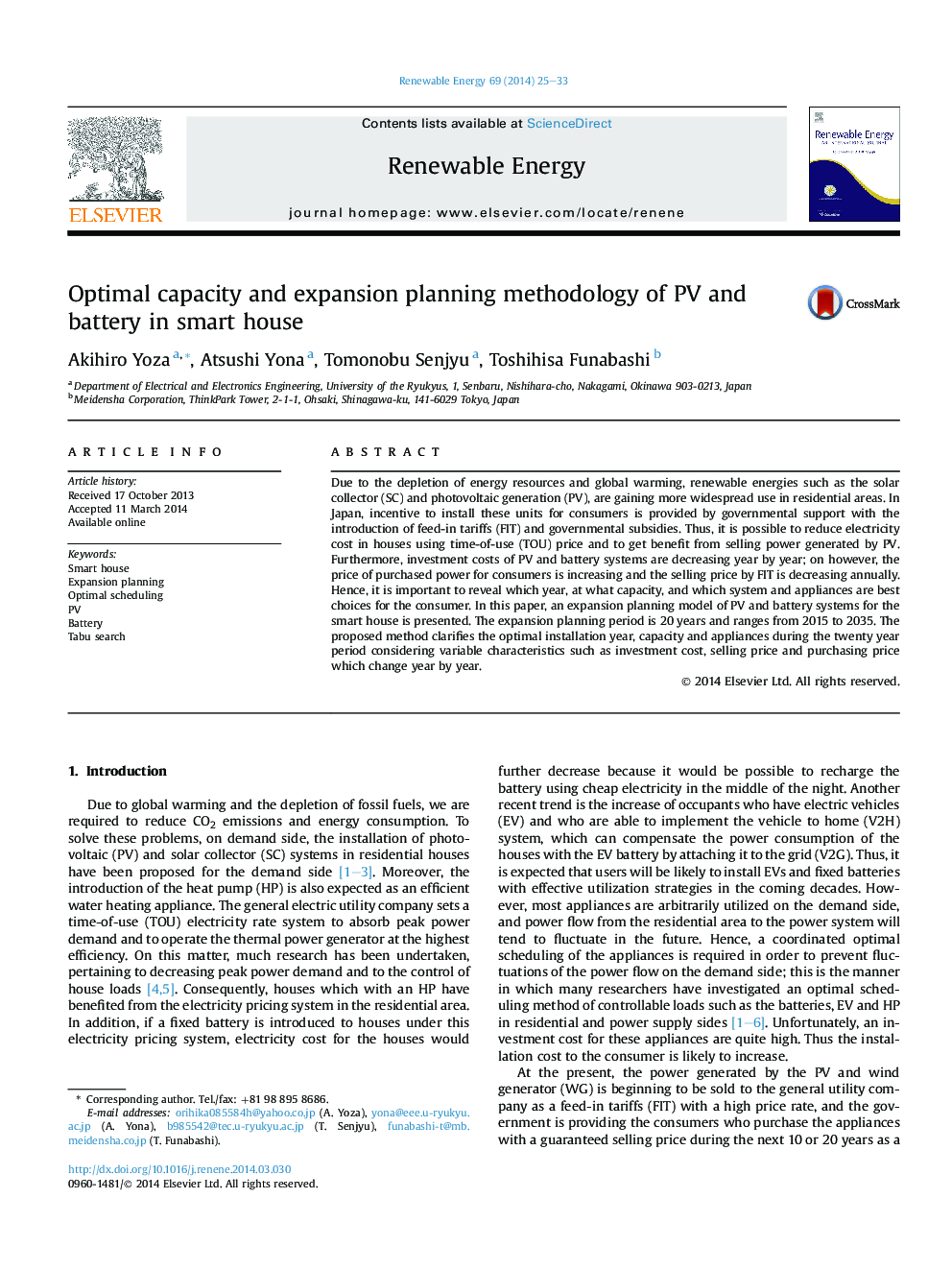| Article ID | Journal | Published Year | Pages | File Type |
|---|---|---|---|---|
| 6768043 | Renewable Energy | 2014 | 9 Pages |
Abstract
Due to the depletion of energy resources and global warming, renewable energies such as the solar collector (SC) and photovoltaic generation (PV), are gaining more widespread use in residential areas. In Japan, incentive to install these units for consumers is provided by governmental support with the introduction of feed-in tariffs (FIT) and governmental subsidies. Thus, it is possible to reduce electricity cost in houses using time-of-use (TOU) price and to get benefit from selling power generated by PV. Furthermore, investment costs of PV and battery systems are decreasing year by year; on however, the price of purchased power for consumers is increasing and the selling price by FIT is decreasing annually. Hence, it is important to reveal which year, at what capacity, and which system and appliances are best choices for the consumer. In this paper, an expansion planning model of PV and battery systems for the smart house is presented. The expansion planning period is 20 years and ranges from 2015 to 2035. The proposed method clarifies the optimal installation year, capacity and appliances during the twenty year period considering variable characteristics such as investment cost, selling price and purchasing price which change year by year.
Related Topics
Physical Sciences and Engineering
Energy
Renewable Energy, Sustainability and the Environment
Authors
Akihiro Yoza, Atsushi Yona, Tomonobu Senjyu, Toshihisa Funabashi,
